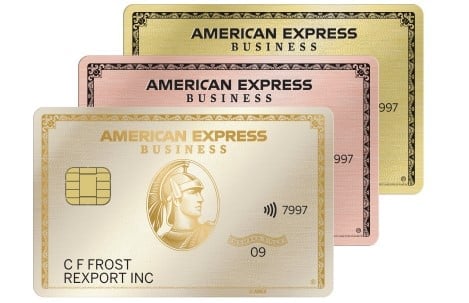Accounts Receivable Factoring: How It Works, How Much It Costs
Factoring receivables lets businesses access cash by selling invoices for cash advances.

Many, or all, of the products featured on this page are from our advertising partners who compensate us when you take certain actions on our website or click to take an action on their website. However, this does not influence our evaluations. Our opinions are our own. Here is a list of our partners and here's how we make money.
Accounts receivable factoring is a way of financing your business by selling unpaid invoices for cash advances. Though it can be expensive, this method can also make sense to bridge cash-flow gaps. And because receivables factoring isn’t technically a small-business loan, it can be a good option for business owners with uneven or short credit histories who may not qualify with a traditional lender.
How much do you need?
We’ll start with a brief questionnaire to better understand the unique needs of your business.
Once we uncover your personalized matches, our team will consult you on the process moving forward.
What is accounts receivable factoring?
Accounts receivable factoring, also known as factoring receivables or invoice factoring, is a type of small-business financing that involves selling your unpaid invoices for cash advances. A factoring company pays you a large percentage of the outstanding invoice amount, follows up with your customer for payment, then pays you the remainder of what you’re owed, minus fees.
How much does accounts receivable factoring cost?
Factoring companies usually charge variable rates. The longer your customers take to pay the invoice, the more you’ll owe.
For example, say a factoring company charges 2% of the value of an invoice per month. The invoice is for $50,000 of work.
If your customer pays within the first month, the factoring company will charge you 2% of the value, or $1,000. If it takes your customer three months to pay, the factoring company will charge 6% of the value, or $3,000.
Some factors charge weekly rates instead of monthly ones. For instance, if a factoring company charges 1% per week and your client takes four weeks to pay, you’ll owe 4%.
If you’ve agreed to recourse factoring, you’ll be on the hook if your customer doesn’t make payments. However, non-recourse factoring means that the factoring company accepts those potential losses. Non-recourse factoring generally comes with higher costs because the factoring company assumes more risk.
How does accounts receivable factoring work?
First, factoring companies typically pay most of the value of the invoice in advance. Advance amounts vary depending on the industry, but can be as much or more than 90%.
Next, your customer pays the factoring company the full value of the invoice.
Finally, the factoring company pays you whatever remains between the amount you were advanced and the full invoice amount minus fees.
For example, say you were advanced 90% of the value of your original invoice. You agreed to pay 2% per month and your customer took two months to pay, making your fees 4% of the value of the invoice. After your customer’s payment, the factoring company will pay you the remaining 6% of the value of the invoice.
Will I qualify for accounts receivable factoring?
To qualify for accounts receivable factoring services, business owners need to have established invoicing practices that give details about sales, prices and payment timelines. Invoices need to be for completed work, not work in progress. Customers also need to be other businesses or government agencies, not individual buyers.
Factoring companies may require businesses to have been in business for a certain amount of time and have a minimum amount of monthly or annual revenue.
The business owner’s credit score doesn’t determine creditworthiness when factoring receivables, however. Since lenders earn money by recouping payment from businesses’ customers, not businesses themselves, factoring companies focus on the creditworthiness of those customers instead. This can make factoring a good option for businesses facing credit challenges or startups with short credit histories.
How is factoring receivables different from accounts receivable financing?
Accounts receivable factoring is the sale of unpaid invoices, whereas accounts receivable financing, or invoice financing, uses unpaid invoices as collateral. Business owners receive financing based on the value of their accounts receivable. After invoices are paid, businesses pay lenders back, with fees.
Factoring is typically more expensive than financing since the factoring company takes responsibility for collecting on the invoice. In the case of non-recourse factoring, they also accept the losses if the invoice goes unpaid.
With accounts receivable financing, on the other hand, business owners retain all those responsibilities.
How do I find an accounts receivable factoring company?
You will typically find accounts receivable factoring through specialized companies, like FundThrough or AltLINE. Factoring companies may also specialize in certain geographies or industries, like construction or trucking. Factoring costs can vary significantly, so reach out to multiple companies for a quote. After approval, many factoring companies can provide financing within a matter of days.
Once you develop a relationship with a factoring company, you can return to them again and again. However, the factoring company will evaluate each of your customers for creditworthiness before deciding whether to factor those invoices.
Is accounts receivable financing a good idea?
Factoring receivables can be a great way to cover gaps in your business’s cash flow, especially if your personal credit history is preventing you from financing through traditional small-business lenders. However, it’s one of the most expensive types of financing, and your approval is also dependent on the credit history of your customers. There are alternatives to factoring receivables if you find it’s not right for you:
If you want to meet short-term cash flow needs. Business lines of credit and credit cards are both revolving, meaning you can draw up to your limit as many times as you need to, as long as you’re paying the balance down. Revolving funding can be a great way to cover cash-flow gaps without the high fees of factoring receivables.
If you’re having trouble qualifying with a traditional lender. If you turned to factoring receivables because you couldn’t get approved for funding from your bank, you may consider trying an online lender instead. Online loans typically have less favorable terms than bank loans, but they still may be a better, cheaper long-term solution for your business than factoring.
If you like how factoring receivables functions, but you want more control. Accounts receivable financing functions similarly to accounts receivable factoring, but instead of selling your invoices to a factoring company, they serve as collateral for a cash advance. While this leaves you with the responsibility of collecting payment from your customers, it also allows you to maintain a little more control.






